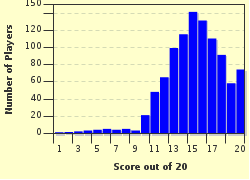Quiz Answer Key and Fun Facts
1. Who was the American theorist (of German origin) responsible for the concept of the "one-dimensional man," a concept that led to his being called "the father of the Left"? (Interestingly, he rejected the nickname).
2. Which of these comedians said, "In the Halls of Justice the only justice is in the halls?"
3. In 1967, who was the leader of Yugoslavia who opened its borders to foreigners and did away with visa requirements?
4. Who sang the famous 1966 song, "These Boots Were Made For Walkin'"?
5. Which world leader in 1963 vetoed a British application to become part of the European Economic Community?
6. What is a kind of non-representational painting called which began early in the twentieth century and which became predominant in the 1960s? Note the subject of this kind of painting is nothing but itself--with one color. Some people here call this a variant of Abstract Expressionism.
7. In 1965, which Latin American leader became the First Secretary of the Communist Party in Cuba?
8. In the bitter Great Flag Debate, in 1965, what flag did Canada give itself?
9. In May 1966, what did Mao Zedong initiate? He spoke of eliminating the hidden 'liberal bourgeoisie' which he saw as dividing China.
10. What was the name of the confrontation on March 21, 1960 in South Africa in which police forces shot upon a group of black protesters?
11. What was the name of the highly segregationist governor of Alabama who in 1963 tried to stop the enrolment of two black students in the University of Alabama?
12. What singer born as Jamesetta Hawkins recorded the classic, "At Last"?
13. Who was the philosopher whose book "Motivation and Personality" with concept of the "self-actualizing person" would be influential in the 1960s human potential movement?
14. Who is the famous French psychoanalyst who introduced the concepts of the mirror stage and said that "the unconscious is shaped like a language"?
15. Who was the surgeon in the first successful human heart transplant in 1967?
16. Who won the World Cup in 1966?
17. What did Bausch and Lomb introduce to the U.S. market in 1965? It was the world's first example of this product.
18. What was invented in 1960 as an alternative to the light bulb?
19. What was the name of the man who didn't get to land on the moon in 1969 but who remained in charge of the command module Columbia?
20. The famous Janis Joplin, the "pearl" of the 60s, had a famous song, "Me and Bobby McGee." Fill in the word that's missing. "Freedom's just another word for nothing ____ to lose."
Source: Author
windswept
This quiz was reviewed by FunTrivia editor
bloomsby before going online.
Any errors found in FunTrivia content are routinely corrected through our feedback system.

